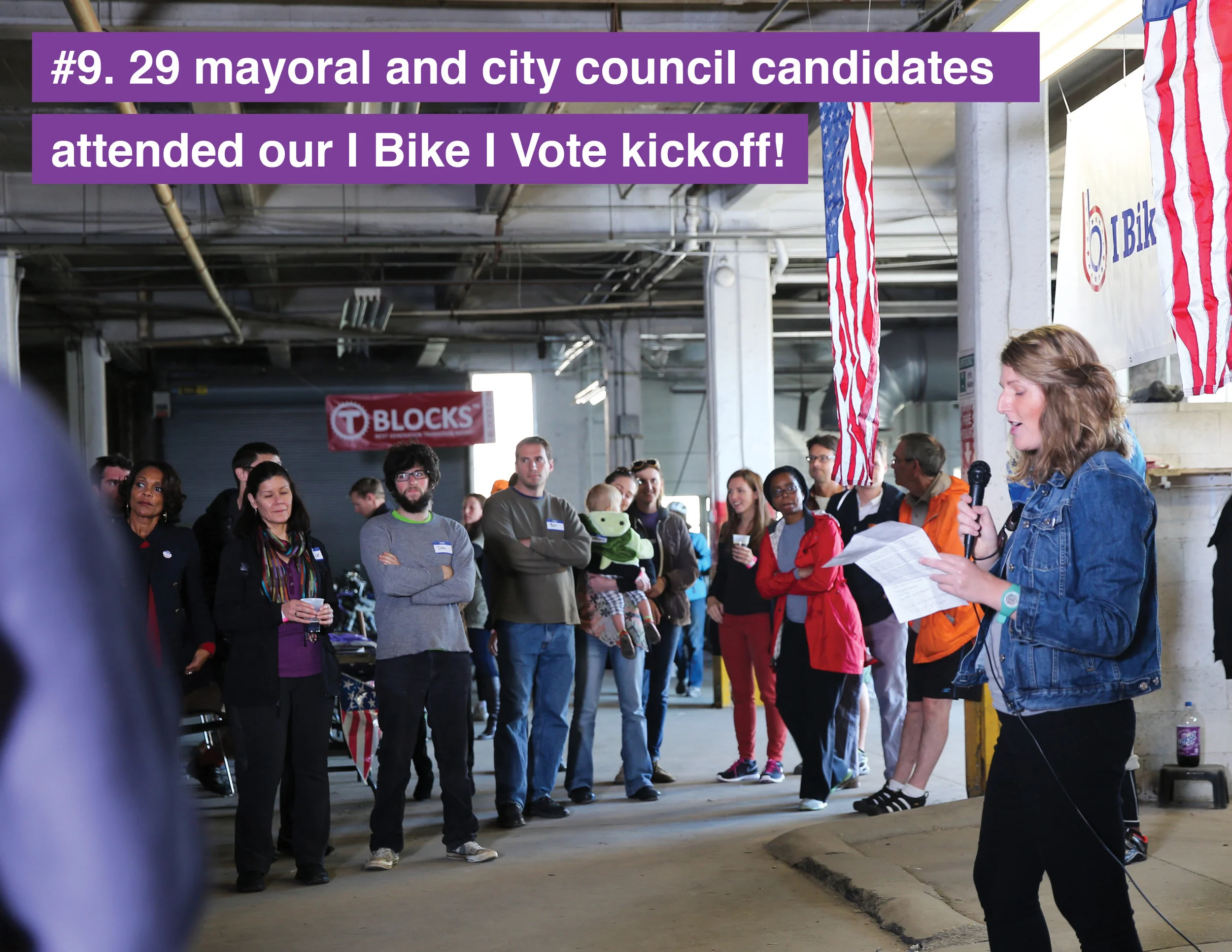by Liz Cornish, Executive Director
Last Tuesday morning, on November 8th, Bikemore staff headed to the polls to assist with Get Out the Vote efforts for Zeke Cohen, who ran for City Council in the first district. It was a chance for us to employ our newly minted 501c4 — our advocacy arm that allows us to be bolder in our political positions, endorsing candidates and specific policies — by volunteering for a candidate that has promised to bring multi-modal transportation solutions to the district.
Each of us spent over thirteen hours talking to voters as they entered the polls all across Southeast Baltimore. I left my post at Highlandtown Elementary exhausted, but hopeful. From the mothers that made multiple trips to the polls throughout the day with their adult children, to hanging out with the middle school boys on bicycles that wanted to discuss politics — the experience connected me with the very best parts of democracy.
As we gathered at Zeke’s victory party, the dissonance set in. Here I was listening to a captivating victory speech from a candidate that just won 70% of the vote. Who campaigned on a platform of racial and environmental justice, and managed to unite and turn out voters from Greektown to Highlandtown to Canton. But behind him, a television that was showing the national election results was telling a different kind of voter turnout story.
Fast forward to Thursday where I joined over 2000 community organizers in Atlanta for Facing Race — “a unique collaborative space for racial justice movement making.” I heard from many leaders and thinkers as they spoke candidly about their pain, shock, and strengthened resolve post-election. I attended workshops on equitable development and community organizing, including one led by Nathaniel Smith from Partners for Southern Equity who publicly stepped down from the Atlanta Beltline Board earlier this year. And while the mood was at times somber when considering the real threat to safety this new administration poses to our black, brown, immigrant, Muslim, Jewish and LGBTQ brothers and sisters, it was also hopeful. I found immense comfort in knowing that despite the realities of the day, thousands of people chose to get on a plane to convene, learn, and work toward racial justice in education, health, and transportation.
And while we are still processing what impacts the National Election have on our work (transportation funding is in flux as is the comfort and safety of our neighbors), on November 8th Baltimore City voters made it incredibly clear that our work to ignite voters and candidates around the issues of livable streets worked.
We elected 8 new City Council Candidates — nearly all of whom completed our candidate questionnaire and are developing real multimodal visions for their districts.
We are working with Councilperson Elect Ryan Dorsey to introduce a more comprehensive Complete Streets bill that will make it easier build streets in ALL neighborhoods that are safe for all users.
Mayor Elect Catherine Pugh stated in her questionnaire response her strong commitment to making Baltimore better for biking and walking. She delivered on this promise this week by appointing two Bikemore staff and two Bikemore board members to her transition team. We are ready to work with the transition team to ensure there is a clear path forward to deliver real results from the campaign promises.
None of this would have been possible without your support. Just one year after launching our I Bike, I Vote campaign, we elected bike friendly candidates across the city and secured a seat at the table in shaping the future transportation vision of the next Mayoral Administration. Thank you to those that turned out at events, volunteered for campaigns, and gave real dollars that support our mission.
As our policy agenda for the next year begins to take shape, we need your support more than ever. Our success is guaranteed only if we have the funds to sustain our work. This year I want to set Bikemore on a path of financial sustainability that will allow us to serve more neighborhoods with our advocacy, and support our hardworking staff by providing important benefits like health insurance. Will you help us grow? We’ve already shown what we can do with a little — imagine what we can do with a lot.
































